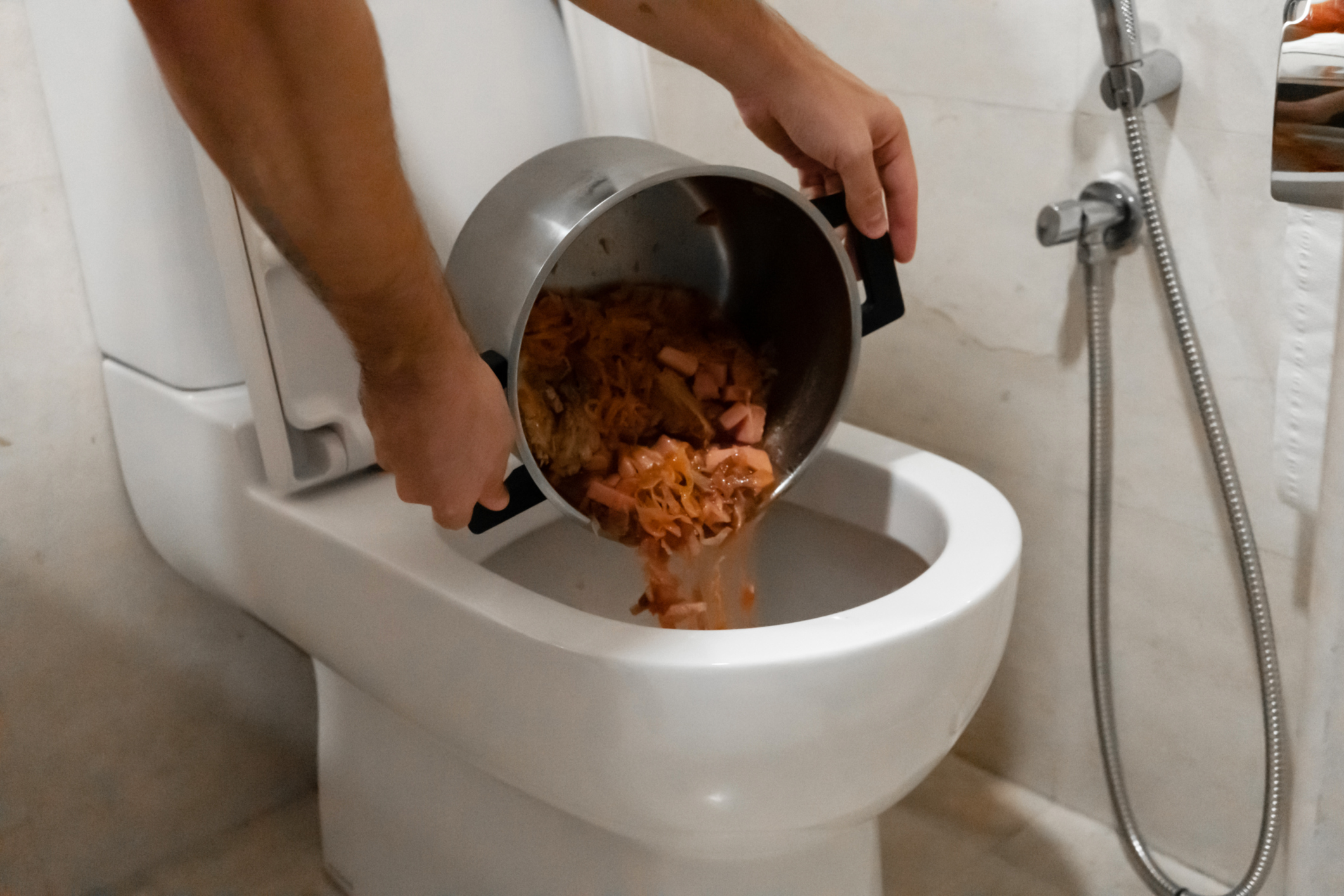Can You to Flush Food in the Toilet?
Can You to Flush Food in the Toilet?
Blog Article
Do you find yourself trying to locate critical info concerning Flushing Food Down the Toilet??

Intro
Many individuals are often faced with the dilemma of what to do with food waste, specifically when it comes to leftovers or scraps. One typical inquiry that emerges is whether it's alright to flush food down the bathroom. In this short article, we'll look into the reasons why people may think about flushing food, the repercussions of doing so, and alternative methods for correct disposal.
Reasons people might take into consideration flushing food
Lack of recognition
Some individuals may not understand the potential damage brought on by flushing food down the toilet. They might incorrectly think that it's a harmless technique.
Convenience
Purging food down the toilet might seem like a quick and very easy service to getting rid of unwanted scraps, specifically when there's no close-by garbage can available.
Idleness
In many cases, people might just pick to flush food out of large laziness, without considering the repercussions of their activities.
Effects of flushing food down the bathroom
Ecological impact
Food waste that winds up in waterways can contribute to pollution and damage aquatic ecological communities. Additionally, the water utilized to flush food can stress water sources.
Plumbing concerns
Flushing food can bring about stopped up pipelines and drains, creating expensive pipes repair work and aggravations.
Kinds of food that ought to not be flushed
Fibrous foods
Foods with fibrous structures such as celery or corn husks can get tangled in pipelines and create clogs.
Starchy foods
Starchy foods like pasta and rice can absorb water and swell, leading to blockages in pipes.
Oils and fats
Greasy foods like bacon or food preparation oils need to never ever be flushed down the bathroom as they can strengthen and create clogs.
Correct disposal methods for food waste
Making use of a garbage disposal
For homes geared up with waste disposal unit, food scraps can be ground up and purged through the pipes system. Nevertheless, not all foods are suitable for disposal in this manner.
Recycling
Particular food packaging products can be reused, minimizing waste and decreasing environmental effect.
Composting
Composting is an environmentally friendly way to throw away food waste. Organic products can be composted and utilized to improve dirt for gardening.
The importance of correct waste management
Minimizing ecological damage
Appropriate waste monitoring methods, such as composting and recycling, aid lessen contamination and maintain natural resources for future generations.
Shielding plumbing systems
By preventing the practice of flushing food down the bathroom, home owners can protect against pricey pipes repair work and preserve the integrity of their pipes systems.
Verdict
Finally, while it might be alluring to purge food down the commode for convenience, it's important to understand the possible repercussions of this action. By embracing appropriate waste management techniques and taking care of food waste responsibly, individuals can contribute to healthier plumbing systems and a cleaner setting for all.
FLUSH FOOD DOWN THE TOILET?
FLUSHING FOOD CAN CAUSE BLOCKED DRAINS IN YOUR HOME
All of the plumbing fixtures in your home are connected to the same sewer pipe outside of your home. This outdoor sewer pipe is responsible for transporting all the wastewater from your home to the Council sewer mains. Even small pieces of food that go down the kitchen sink can cause problems for your sewer. It should therefore be obvious that flushing larger bits of food, such as meat, risks a clog in either the toilet itself or the sewer pipes. Flushing greasy food is even more problematic because oil coagulates when it cools, coating the interior lining of your pipes.
THE TOILET IS NOT A BIN
Food isn’t the only thing that people shouldn’t be flushing down the toilet. People use the toilet to dispose of all kinds of things such as tampons, makeup wipes, dental floss, kitty litter and even underwear. Water goes to great lengths to educate residents about the high costs and stress placed on wastewater treatment systems simply from people flushing the wrong stuff down the toilet. It costs taxpayers millions of dollars each year, and homeowners thousands in blocked drain repairs.
FLUSHING FOOD IS A WASTE OF WATER
Flushing food is a waste of our most precious resource - water. In June this year Level 1 water restrictions were introduced to protect water supply from drought conditions. Much of New South Wales continues to be affected by prolonged drought with recent figures revealing up to 97 per cent of the state remains in drought. Depending on whether you have a single or dual flush toilet, every single flush uses between five and 11 litres of water. In the current climate this is a huge amount of water to be wasting on flushing food that should be placed in the bin (or better yet, the compost).
https://www.jabplumbingsolutions.com.au/blog/can-you-flush-food-down-the-toilet

I was guided to that article about Flushing Food Down the Toilet? from an acquaintance on a different domain. If you appreciated our blog post if you please make sure you remember to share it. I praise you for your time. Don't forget to pay a visit to our blog back soon.
Click For More Information Report this page